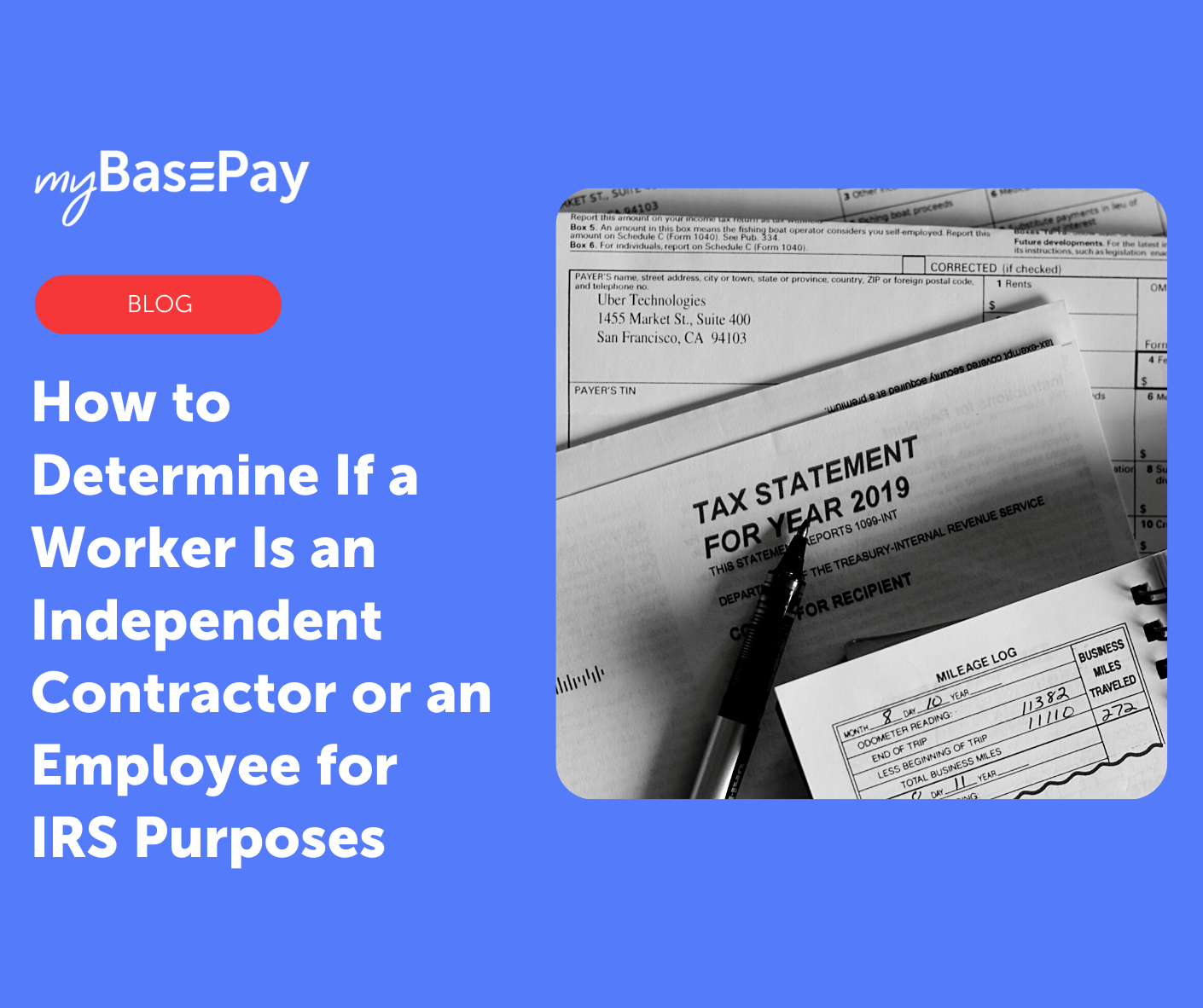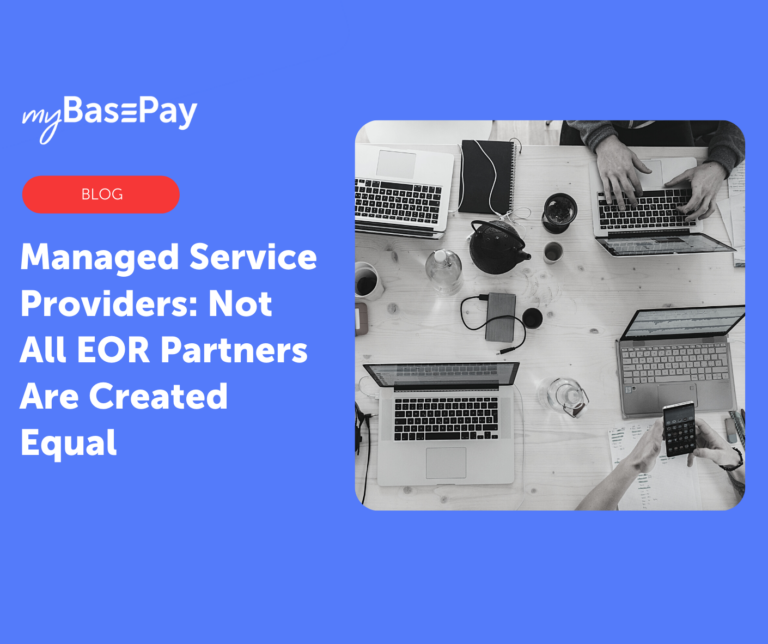How to Determine If a Worker Is an Independent Contractor or an Employee for IRS Purposes
These days, companies are increasingly using a mix of full-time and contingent workers to complete projects and help the business move forward. While establishing successful relationships with freelancers can provide a significant boost to your bottom line, there is no denying that using contingent talent also introduces some potential complications to your operations.
The chief of these is how the IRS classifies your workers. Employers have significantly greater responsibilities toward their employees than they do toward contractors. However, if you classify a worker as a contractor and the IRS considers them to be an employee, you could find yourself in regulatory hot water.
By understanding the standards the IRS uses to classify workers and maintaining appropriate relationships with contractors, you can avoid these potential stumbling blocks.
IRS Standards for Employees
According to the IRS, the most basic standard for an employee under common law rules is when “you can control what will be done and how it will be done. This is so even when you give the employee freedom of action. What matters is that you have the right to control the details of how the services are performed.”
When it comes to tax purposes, the IRS further breaks down the standard for someone being considered an employee into three key categories: behavioral control, financial control and the relationship between the parties.
Behavioral control means the business directs how a worker goes about completing tasks. This commonly includes requiring the worker to be present in the office at specific times (the where and when). This is especially true of full-time work that would preclude the individual from seeking other employment. Requirements for reports on project status, or requiring that an individual complete their work in a specific sequence also indicates their employee status.
Financial control goes beyond just how the company pays the worker (though a predetermined salary is generally indicative of employee status). Employees will typically have equipment provided to them by the company, rather than needing to purchase it themselves. When travel and other business expenses are directly reimbursed by the company, it indicates the individual is an employee.
Finally, the nature of the relationship will determine someone’s employee status. When someone is offered health insurance, vacation pay or other similar benefits, they will be considered an employee. A continuous, ongoing relationship — rather than one that is agreed to for a single project or a set time period — also indicates employee status.
How Contractors Differ
Contractors are in business for themselves. They provide their services to several businesses — typically, your company will not be consuming all of their time week in and week out.
The three factors of behavioral control, financial control and the party relationship also look different. For example, while a business could set a deadline for a project they give to a contractor, they would not control where, when or how the contractor completes the work. The contractor could come into your facility, or they could work from home. They could even assign the project to a sub-contractor as part of their own business operations.
In terms of financial control, your company is only responsible for paying the agreed-upon fee for the project. Your business will not reimburse the contractor for their expenses or provide equipment (though they will likely account for this when they calculate their fee).
Finally, the established relationship between the two parties is typically more limited in nature. The contract will likely be for a single project, or for work that is not viewed as a “key aspect” of your company’s regular business. It will not involve employee-type benefits, which can greatly reduce your operating expenses. Nor can you prevent the contractor from doing work for other clients while working on your project.
Essentially, while a contractor will still perform work for you, they must be truly independent in how they complete that work.
How an EOR Can Help
Worker misclassification is something the IRS takes very seriously — and the most common issue is when someone does the work of an employee but is classified as a contractor.
As an analysis from JD Supra explains, “If the IRS determines that an individual has been misclassified, it may levy penalties against the employer, including, but not limited to, a $50 fine for each Form W-2 the employer failed to file on such employee, a penalty of up to 3% of the wages, plus up to 40% of the FICA taxes that were not withheld from the employee and up to 100% of the matching FICA taxes the employer should have paid. If the IRS determines that an employer misclassified its employees willfully, the penalties are even greater.”
Because of this, many organizations that work with independent contractors use an employer of record (EOR) to ensure that all workers are properly classified and to mitigate their risks and liabilities. An EOR operates as the legal employer for the workers a staffing company provides to your business.
As the legal employer, the EOR is responsible for all responsibilities associated with workers, including compliance administration, payroll, unemployment claims and more. They can manage both PTO and health insurance eligibility for full-time employees, as well as liability and compliance for gig workers.
By essentially allowing you to outsource this crucial aspect of employment, you can have peace of mind knowing that your EOR will keep you compliant with IRS standards for both full-time employees and independent contractors.
Stay Compliant and Make the Most a Contingent Workforce
The number of freelancers in the United States is steadily rising — and is even projected to become the majority of the workforce by 2027. As such, understanding the difference between independent contractors and employees will be increasingly important as you navigate worker relationships.
By ensuring that your relationships with independent contractors adhere to IRS guidelines, you can avoid tax classification purposes. You can also get peace of mind when you partner with myBasePay. Offering complete EOR solutions, including onboarding, payroll and compliance administration, myBasePay enables you to scale your workforce without adding to your administrative workload.
Author: Cesar Jimenez, myBasePay CEO
Cesar A. Jimenez is an entrepreneur, investor, and military veteran with over 25 years of staffing industry expertise successfully leading technology staffing organizations. His expertise in the IT industry allows him to use his experience as a thought leader for talent acquisition, staffing, IT, and recruitment technologies with a passion for contingent workforce solutions. Cesar has held various leadership roles for both a global staffing organization and technology solutions companies. This expertise has enabled him to develop alternative workforce models that provide the agility for organizations to be competitive in today’s marketplace. In his spare time, he enjoys spending time with hisfamily, working out, and coaching high school baseball players.






